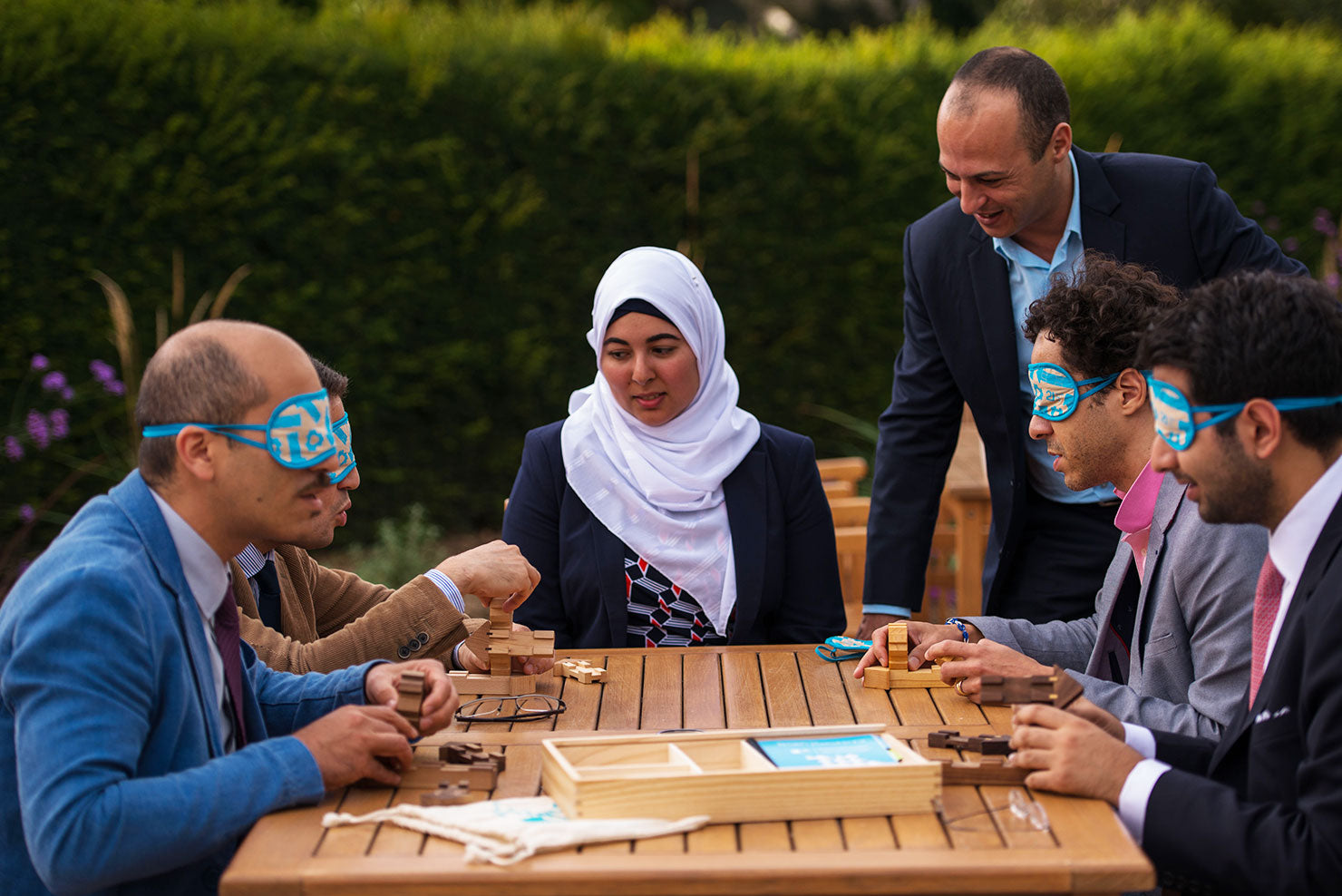-
Small Team Retreats and Meetings
If you want to start a conversation about empathy with your team at work, get one or two groups of 5-10 people together at a small meeting or retreat, and bring your Empathy Toy! This is a great opportunity to break the ice and get your team thinking about and practicing skills like empathy, communication, and collaborative problem solving. This is a great application for small teams, HR departments, or management teams.

The Empathy Toy at Cambridge University, Photographer Francois du Chatenet
“As the name suggests, [the Empathy Toy] can certainly help in the development of empathy, but can also be used as a catalyst for deep discussions on communication, team dynamics, problem solving, and a wide variety of other issues.”
– Drew Dudley TEDx speaker, author, and facilitatorIf you have fun playing the toy in a small group, get in touch with us about how you can expand the Empathy Toy throughout your organization with our workshops.
-
Add the Empathy Toy to an Existing Program
Our partners who work in HR or in corporate facilitation already have really powerful workshops and programs on a wide range of topics. Wherever your expertise lies, there are lots of ways to incorporate the Empathy Toy into the work that you are already doing. The Empathy Toy can add an experiential component to your existing content, which helps to make the workshop content stick with participants. If you are working with one or two groups of 5-10 people, and have at least 30 mins available in your agenda, you can add the Empathy Toy to your program to complement your thought leadership in a playful way.
Ran our communication module with some of @benevity’s tech team with the help of the #EmpathyToy from our friends at @21Toys! pic.twitter.com/YOS1OVK8O6
— Equity Leaders (@equityleaderorg) April 13, 2018Wow! #EmpathyToy happening simultaneously in French + Spanish at Coach Skills for the Agile Workplace pic.twitter.com/dWKGuswhzg
— Sue Johnston (@ItsUnderstood) March 9, 2018If you’re looking to get more tips, strategies, and ideas for how you can integrate the toy into your existing workshops, consider joining us for in-person Empathy Toy Training.
-
Hiring and Interviews
Google found that the standard practices of interviewing don’t accurately predict whether a candidate will succeed with a team or a company as a whole, but they have found that standardizing parts of the process and including play improves their ability to find better candidate matches. A number of companies are now using the Empathy Toy in their interview process to better understand if a candidate is a good fit for their team.
Here are a few ways you can do it!
-
Have a prospective employee play the toy with a potential co-worker or direct report to get a picture of how they might work together.
-
Instead of looking at their list of skills and seeing “communication”, take those skills for a test drive in a playful way.
-
If you want to build a team that values empathy, show your candidates how important this is to you by including this in your interview process.
Interested in learning more about using the Empathy Toy in hiring?
Send us a message and we'd be happy to set up a time to discuss!
-

